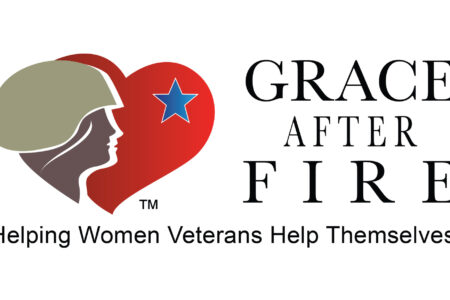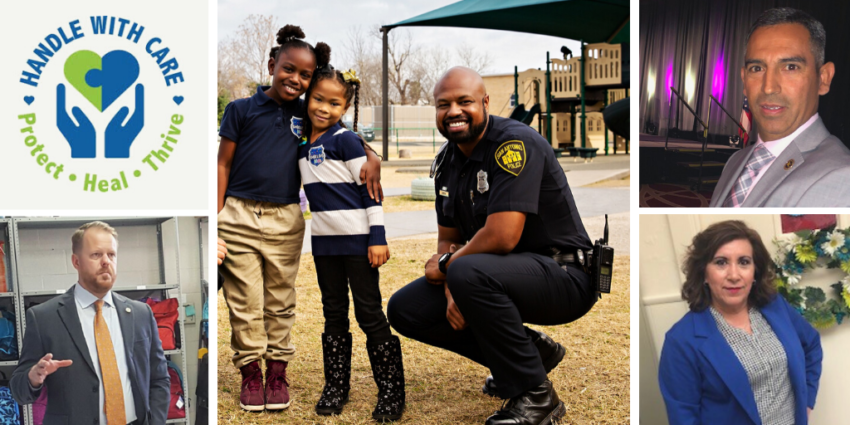
Share On Social!
Over the past few years, dozens of U.S. schools launched the Handle With Care program to better support students facing childhood trauma like poverty and domestic violence.
For the program, police alert school leaders when they encounter a child at a traumatic scene, so schools are prepared to keep an eye on the student and provide support or services.
But now schools are closed due to coronavirus.
So how are these schools adapting the Handle With Care program and maintaining meaningful connections with students in the face of school closures?
We asked three people who got the Handle With Care program started in San Antonio.
How Did Handle With Care Begin in San Antonio?
Read or watch how Diana Centeno of San Antonio ISD (SAISD), John Hernandez of East Central ISD (ECISD), and Tyler Shoesmith of Northeast ISD (NEISD) teamed with the San Antonio Police Department (SAPD) to pilot-test Handle With Care in January 2019.
The program has three main components:
- Police send an email notification to schools when a child is a witness at the scene of an incident. No details about the incident are sent; only the child’s name, age, school, and the note to “Handle With Care.”
- Schools triage the notifications to relevant teachers and counselors. These leaders keep an eye on the student and prepare to offer trauma-sensitive support. This can include sending the student to the nurse’s office to sleep or to a counselor for support, instead of discipline.
- Mental healthcare providers partner with schools to provide on-site therapy, as needed.
After a successful pilot, the three leaders implemented Handle With Care district-wide in September 2019. Other districts joined, too.
What Happened to Handle With Care When Schools Closed in San Antonio?
Centeno, a student support leader at SAISD, knew schools needed to keep Handle With Care going as schools started to close due to the COVID-19 pandemic.
“[Child] abuse and neglect during this time are expected to rise,” Centeno said.
Fortunately, Doug Greene of SAPD, was already discussing with district leaders on how to continue Handle With Care during the summer.
So, when schools closed over spring break, police and schools didn’t miss a beat.
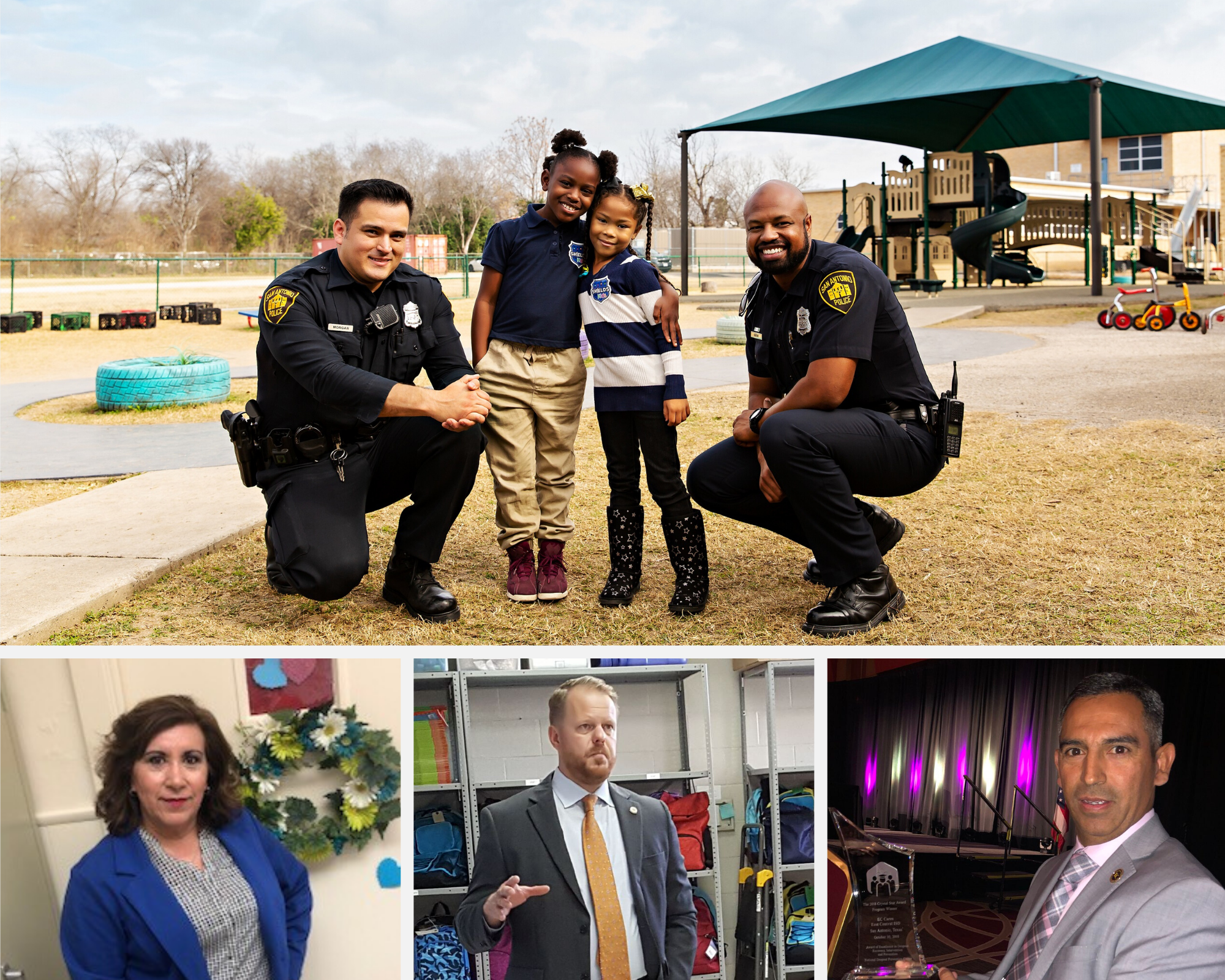 Police officers continued sending notifications to schools. Schools continued triaging notifications to the appropriate teachers or social workers.
Police officers continued sending notifications to schools. Schools continued triaging notifications to the appropriate teachers or social workers.
But, each the three school districts adapted to virtual communications a bit differently.
Diana Centeno: Student Tracker App in SAISD
Now, when a Handle With Care notification comes in, social workers in SAISD collaborate with campus staff to prepare for virtual contact with the student.
They get necessary background info on the student and the family. They also review issues to look out for when making contact. They track virtual interactions on Excel spreadsheets.
But soon enough, some district personnel got frustrated when starting, sharing, and updating Excel spreadsheets for the virtual contacts.
“We could see and respond to Handle With Care notifications and other red flags in the school, but now, nobody has eyes on these kids,” Centeno said. “And what about when we can’t reach some of them?”
Enter Theresa Urrabazo.
Urrabazo, SAISD’s senior executive director of accountability, research, evaluation, and testing, was asked by Superintendent Pedro Martinez to find a better way of tracking virtual contacts.
“Anything has to be better than trying to identify interactions with a specific student among a bunch of spreadsheets going back and forth,” Urrabazo said.
Urrabazo learned Microsoft Office Suite had a free app-building platform.
So her team built a Student Interactions Tracker app in just one weekend.
The app tracks interactions with all students at SAISD, including those with Handle With Care notifications. Teachers, counselors, nurses, and principals can track interactions with students by mode, such as phone call, Google Classroom, Zoom, Skype, Classtag, and more.
Urrabazo and her team made the app easier than the Excel spreadsheets by pre-populating each student’s name, ID number, and schedule. Now, school staff only have to enter the date, mode, and relevant notes.
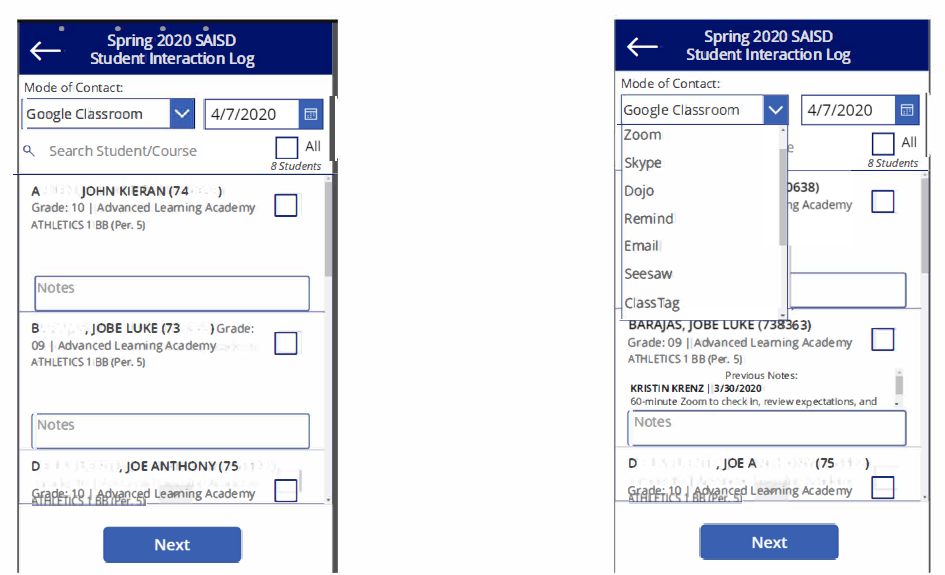
“Somebody is monitoring notes to see what is going on with students,” Urrabazo said.
There is also a dashboard with drilldown capabilities. For example, the dashboard can show daily percent of student interactions by grade and all interactions made by counselors.
“Unlike Google Classroom reports, which are three days behind, the student tracker is updated every day at 4 p.m.,” Urrabazo said.
Beyond the dashboard, Urrabazo is tracking data on the back end.
She will regularly compile reports of students who haven’t been contacted so that administrators and teachers can focus on reaching them. She will also track interactions back to attendance and test scores.
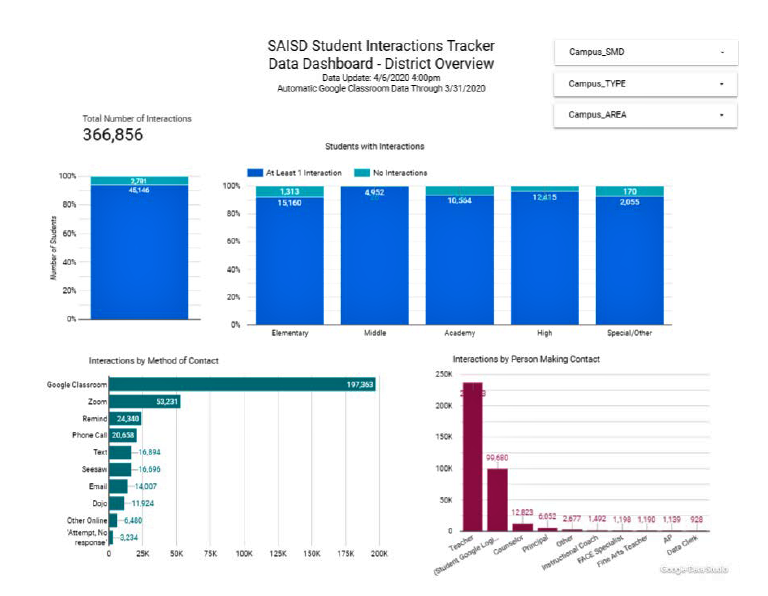
“The whole purpose of the app is so that we can create a list of kids we haven’t heard from,” Urrabazo said.
Urrabazo developed a training video and is using Zoom meeting to help school staff learn to use the app.
The app, only in operation for a week as of April 6, 2020, is already proving helpful.
For example, the district learned that the parent of an SAISD student passed away from COVID-19. Teachers, administrators and support services used the tracker to ensure someone had reached out to the family─and also ensured they weren’t inundating the family with too many phone calls.
“Maybe there is a teen parent I can’t reach, but now I look on the tracker and see that a teacher made meaningful contact,” Centeno said. “It’s more than a phone call. We want to have eyes on that baby.”
SAISD also developed a resource page for families.
They got over 5,000 responses to a survey to identify the greatest needs that families had as a result of school closures.
Based on those responses, they developed the SAISD Community Resource Hub website, a one-stop-shop to help families find resources from area partners.
Families can access it in English or Spanish.
John Hernandez: Delivery Teams in East Central ISD
John Hernandez, ECISD’s director of student services, said his district also is continuing their Handle With Care program.
They reach out to students virtually when they get a notification from police.
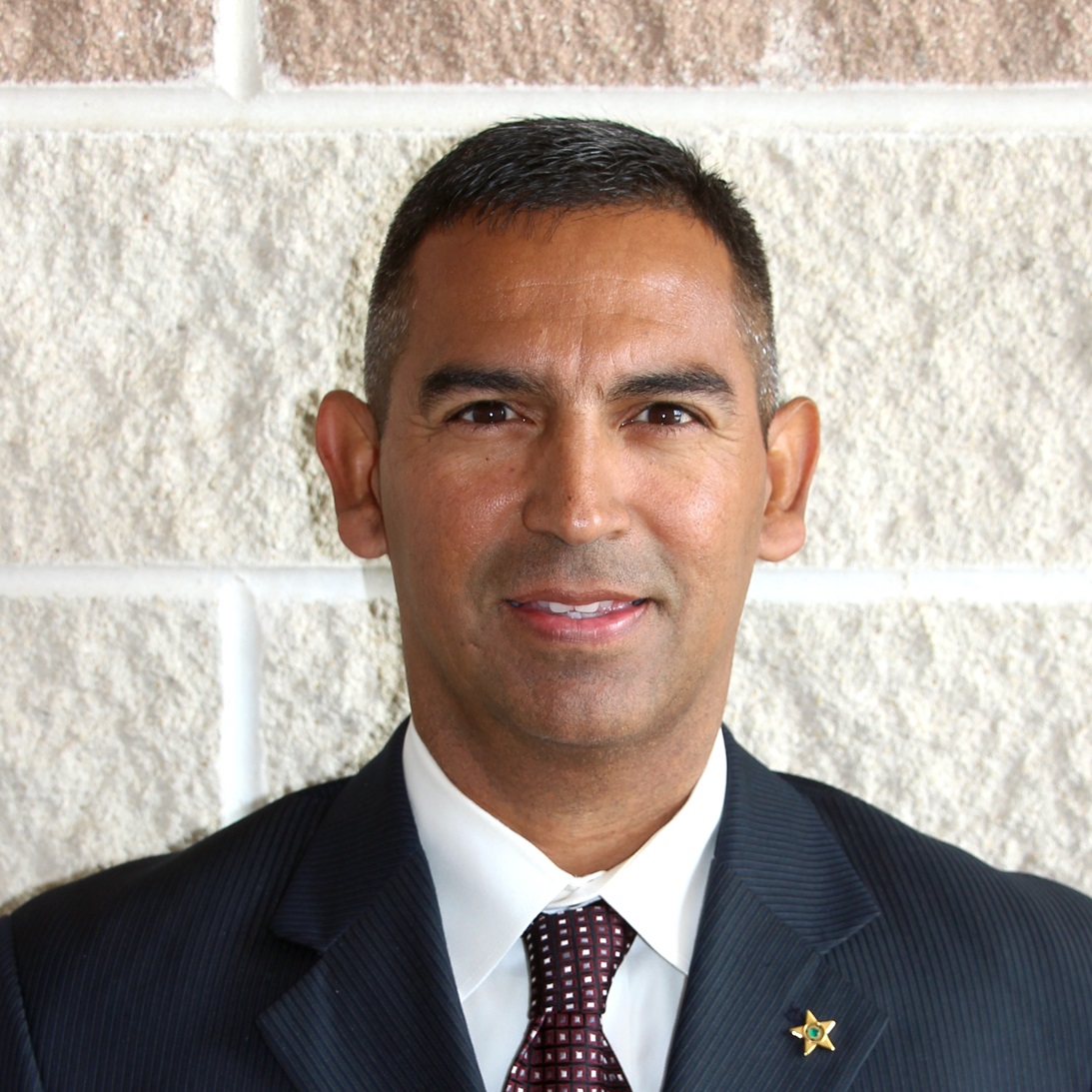
They also ensure that all students get a daily call from a teacher or counselor. For high school students, each fifth-period teacher must call their students every day.
“We are still doing what we do to meet kid’s needs,” Hernandez said.
If the student says they or their family needs something, the teacher alerts the counselor.
The counselor brings that information to a Zoom virtual with Hernandez (a practice that started as part of their EC Cares program to track students facing trauma).
The EC Cares team lists families who need food, toiletries, paper curriculum, and tablets. Then they set up teams to bring it to them.
The teams are made up of counselors, nurses, and Communities in Schools (CIS), Hernandez said.
“We made 121 home visits last week and will do 130 this week,” Hernandez said.
But he knew that families’ needs were much greater than what they may tell the school.
So, he developed a small, foldable card with the phone number to reach the EC Cares team. The card also lists the confidential United Way hotline—211—and the website for the San Antonio Community Resource Directory.
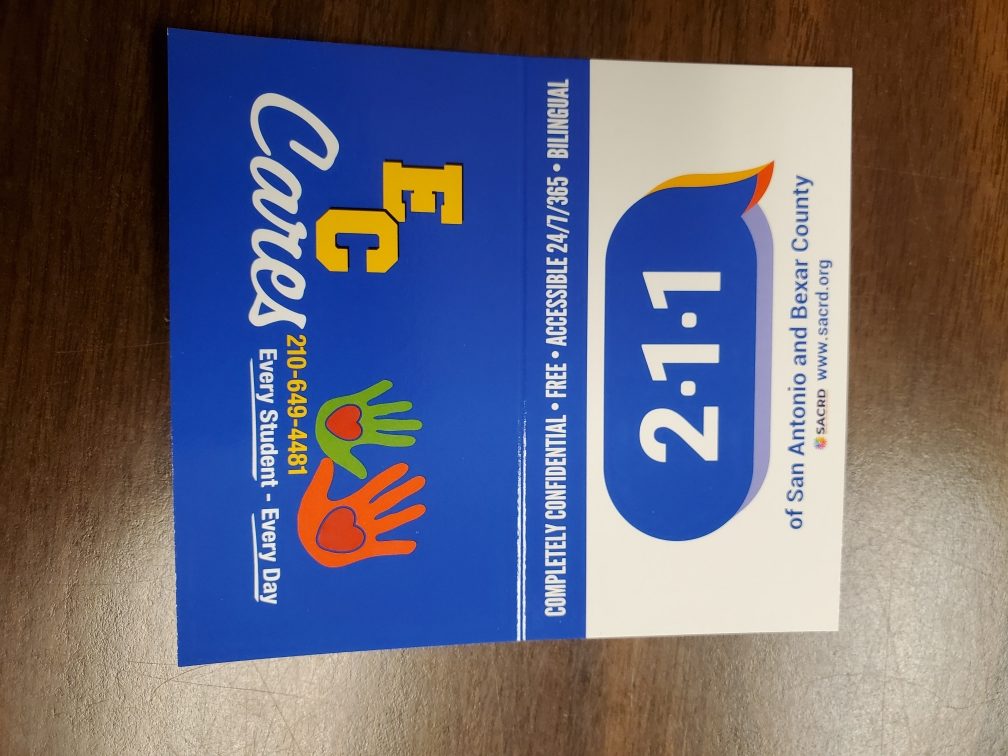 During the visits, the ECISD teams hand out the cards.
During the visits, the ECISD teams hand out the cards.
Hernandez understands that kids’ basic needs must be satisfied before kids can satisfy any of the different objectives and skills that educators set for their students, known as Blooms Taxonomy.
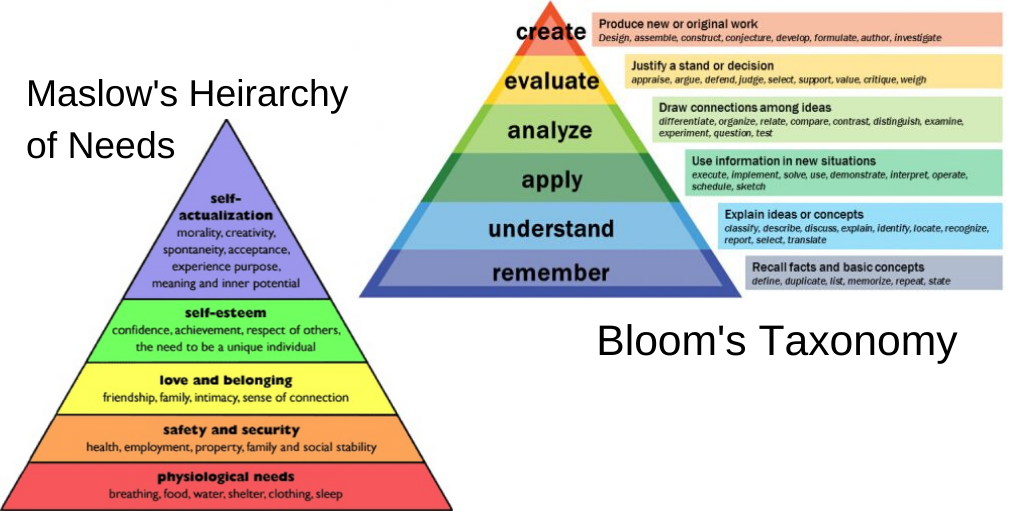 According to Maslow’s Hierarchy of Needs, humans have five categories of needs: physiological, safety, love, esteem, and self-actualization, where higher needs can be realized only after people feel they have satisfied the previous need. For example, food, sleep, security of body, friendship, respect by others are required before students can be expected to recall facts, explain ideas, and draw connections among ideas.
According to Maslow’s Hierarchy of Needs, humans have five categories of needs: physiological, safety, love, esteem, and self-actualization, where higher needs can be realized only after people feel they have satisfied the previous need. For example, food, sleep, security of body, friendship, respect by others are required before students can be expected to recall facts, explain ideas, and draw connections among ideas.
“You’ve got to take care of Maslow’s needs before Blooms Taxonomy,” Hernandez said.
Tyler Shoesmith: Social Emotional Learning Toolkit in Northeast ISD
Shoesmith, NEISD’s senior director of student leadership and well-being, already helped set up a citywide Handle With Care notification system with police.
 NEISD also is continuing Handle With Care amid school closures.
NEISD also is continuing Handle With Care amid school closures.
“When myself, the head counselor and chief of police receive the notification, we send it to the campus principal, and two designated points of contact, who call the family,” Shoesmith said. “Just like before schools closed, they don’t ask anything about the incident, but ask how the family is and offer support.”
NEISD has only received two notifications since spring break.
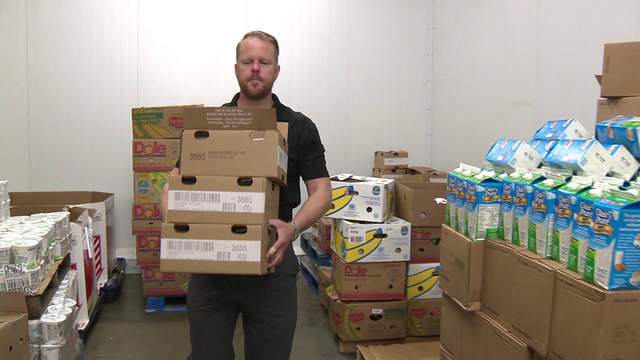
But Shoesmith is already working on broader initiatives to care for students’ emotional health.
For example, NEISD has social and emotional learning coaches (SEL coaches) trained in adverse childhood experiences (ACEs). Their primary responsibility is to manage support services, behavior interventions, interventions in classrooms, and to teach others in school about ACEs.
When schools closed, the SEL coaches worked quickly to figure out how to transition SEL to a virtual learning world for campuses and parents.
“Keeping the connectivity pieces in place with students is very important,” Shoesmith said. “We don’t have any interactions anymore besides Zoom, Facetime, and Google Classroom.”
So, they helped curate the Distance Learning Hub based on their SEL Framework.
Within the Distance Learning Hub, teachers have access to an internal hub with information about integrating SEL into the curriculum.
For example, SEL coaches worked with Algebra teachers to integrate SEL into math curriculum.
“SEL isn’t a program,” Shoesmith said. “It’s how we do business.”
Shoesmith is particularly concerned by the shift back to direct from differentiated instruction.
Differentiated instruction has different tiers of learning for different learning styles. Direct instruction is the classic model where a teacher is “on stage” teaching for seven hours a day.
“Schools were shut down and it became direct teach again,” Shoesmith said. “We are having to rebuild teaching from an online standpoint to meet kid’s different levels of learning.”
In addition to supporting educators through this crisis, Shoesmith wants to support families.
Within the Distance Learning Hub, parents have access to Family SEL Resources with a toolkit, behavioral support strategies, self-regulation strategies, daily practice challenges, breathing exercises and self-reflection writing exercises.
“A lot of things in toolkit are things kids can do at home with families,” Shoesmith said.
They also have access to a resource page with various hotlines. They also have information and links to various community resources, such as child care assistance, emergency shelters, counseling, and transportation.
“We are trying to mitigate a pandemic,” Shoesmith said. “Families are in crisis mode. We don’t want to put more pressure on them.”
What Can You Do for Traumatized Kids in Your Area?
Even amid the coronavirus pandemic, you can start a Handle With Care program.
Download the free Salud America! “Handle With Care Action Pack.” The Action Pack helps police, school, and mental healthcare leaders start the Handle with Care program, in which police notify schools when they encounter children at a traumatic scene, so schools can provide support right away.
Over 700 school and police leaders around the nation already have downloaded the Action Pack to start Handle With Care in their areas!
Explore More:
ACESBy The Numbers
142
Percent
Expected rise in Latino cancer cases in coming years
This success story was produced by Salud America! with support from the Robert Wood Johnson Foundation.
The stories are intended for educational and informative purposes. References to specific policymakers, individuals, schools, policies, or companies have been included solely to advance these purposes and do not constitute an endorsement, sponsorship, or recommendation. Stories are based on and told by real community members and are the opinions and views of the individuals whose stories are told. Organization and activities described were not supported by Salud America! or the Robert Wood Johnson Foundation and do not necessarily represent the views of Salud America! or the Robert Wood Johnson Foundation.

